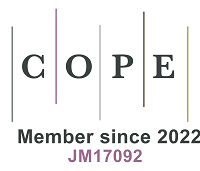REFERENCES
1. Melymuk L, Demirtepe H, Jílková SR. Indoor dust and associated chemical exposures. Curr Opin Environ Sci Health 2020;15:1-6.
2. Kang Y, Yin Y, Man Y, et al. Bioaccessibility of polychlorinated biphenyls in workplace dust and its implication for risk assessment. Chemosphere 2013;93:924-30.
3. Liagkouridis I, Cequier E, Lazarov B, et al. Relationships between estimated flame retardant emissions and levels in indoor air and house dust. Indoor Air 2017;27:650-7.
4. Abdallah MA, Bressi M, Oluseyi T, Harrad S. Hexabromocyclododecane and tetrabromobisphenol-A in indoor dust from France, Kazakhstan and Nigeria: implications for human exposure. Emerging Contaminants 2016;2:73-9.
5. Barghi M, Shin ES, Kim JC, Choi SD, Chang YS. Human exposure to HBCD and TBBPA via indoor dust in Korea: estimation of external exposure and body burden. Sci Total Environ 2017;593-594:779-86.
6. Fromme H, Hilger B, Kopp E, Miserok M, Völkel W. Polybrominated diphenyl ethers (PBDEs), hexabromocyclododecane (HBCD) and "novel" brominated flame retardants in house dust in Germany. Environ Int 2014;64:61-8.
7. Drage D, Mueller JF, Birch G, Eaglesham G, Hearn LK, Harrad S. Historical trends of PBDEs and HBCDs in sediment cores from Sydney estuary, Australia. Sci Total Environ 2015;512-3:177-84.
8. Liu K, Li J, Yan S, Zhang W, Li Y, Han D. A review of status of tetrabromobisphenol A (TBBPA) in China. Chemosphere 2016;148:8-20.
9. Yi S, Liu JG, Jin J, Zhu J. Assessment of the occupational and environmental risks of hexabromocyclododecane (HBCD) in China. Chemosphere 2016;150:431-7.
10. Hassan Y, Shoeib T. Levels of polybrominated diphenyl ethers and novel flame retardants in microenvironment dust from Egypt: an assessment of human exposure. Sci Total Environ 2015;505:47-55.
11. Malkoske T, Tang Y, Xu W, Yu S, Wang H. A review of the environmental distribution, fate, and control of tetrabromobisphenol A released from sources. Sci Total Environ 2016;569-70:1608-17.
12. Wu Y, Li Y, Kang D, et al. Tetrabromobisphenol A and heavy metal exposure via dust ingestion in an e-waste recycling region in Southeast China. Sci Total Environ 2016;541:356-64.
13. Peng C, Tan H, Guo Y, Wu Y, Chen D. Emerging and legacy flame retardants in indoor dust from East China. Chemosphere 2017;186:635-43.
14. Bastiaensen M, Ait Bamai Y, Araki A, et al. Biomonitoring of organophosphate flame retardants and plasticizers in children: associations with house dust and housing characteristics in Japan. Environ Res 2019;172:543-51.
15. Liu D, Wu P, Zhao N, et al. Differences of bisphenol analogue concentrations in indoor dust between rural and urban areas. Chemosphere 2021;276:130016.
16. Collins CD, Craggs M, Garcia-Alcega S, Kademoglou K, Lowe S. 'Towards a unified approach for the determination of the bioaccessibility of organic pollutants'. Environ Int 2015;78:24-31.
17. Cui XY, Xiang P, He RW, Juhasz A, Ma LQ. Advances in in vitro methods to evaluate oral bioaccessibility of PAHs and PBDEs in environmental matrices. Chemosphere 2016;150:378-89.
18. Kademoglou K, Williams AC, Collins CD. Bioaccessibility of PBDEs present in indoor dust: a novel dialysis membrane method with a Tenax TA® absorption sink. Sci Total Environ 2018;621:1-8.
19. Brandon EF, Oomen AG, Rompelberg CJ, Versantvoort CH, van Engelen JG, Sips AJ. Consumer product in vitro digestion model: bioaccessibility of contaminants and its application in risk assessment. Regul Toxicol Pharmacol 2006;44:161-71.
20. López-Vázquez J, Rodil R, Trujillo-Rodríguez MJ, Quintana JB, Cela R, Miró M. Mimicking human ingestion of microplastics: oral bioaccessibility tests of bisphenol A and phthalate esters under fed and fasted states. Sci Total Environ 2022;826:154027.
21. Lorenzi D, Entwistle J, Cave M, Wragg J, Dean JR. The application of an in vitro gastrointestinal extraction to assess the oral bioaccessibility of polycyclic aromatic hydrocarbons in soils from a former industrial site. Anal Chim Acta 2012;735:54-61.
22. Cui X, Mayer P, Gan J. Methods to assess bioavailability of hydrophobic organic contaminants: principles, operations, and limitations. Environ Pollut 2013;172:223-34.
23. Denys S, Caboche J, Tack K, et al. In vivo validation of the unified barge method to assess the bioaccessibility of arsenic, antimony, cadmium, and lead in soils. Environ Sci Technol 2012;46:6252-60.
24. Wragg J, Cave MR, Taylor H, et al. Inter-laboratory trial of a unified bioaccessibility testing procedure. Available from: https://nora.nerc.ac.uk/id/eprint/7491/1/OR07027.pdf [Last accessed on 7 Jun 2024].
25. Wragg J, Cave M, Basta N, et al. An inter-laboratory trial of the unified BARGE bioaccessibility method for arsenic, cadmium and lead in soil. Sci Total Environ 2011;409:4016-30.
26. Cave MR, Wragg J, Harrison I, et al. Comparison of batch mode and dynamic physiologically based bioaccessibility tests for PAHs in soil samples. Environ Sci Technol 2010;44:2654-60.
27. Starr JM, Li W, Graham SE, Shen H, Waldron F. Is food type important for in vitro post ingestion bioaccessibility models of polychlorinated biphenyls sorbed to soil? Sci Total Environ 2020;704:135421.
28. Oomen AG, Sips AJAM, Groten JP, Sijm DTHM, Tolls J. Mobilization of PCBs and lindane from soil during in vitro digestion and their distribution among bile salt micelles and proteins of human digestive fluid and the soil. Environ Sci Technol 2000;34:297-303.
29. Harrad S, Goosey E, Desborough J, Abdallah MA, Roosens L, Covaci A. Dust from U.K. primary school classrooms and daycare centers: the significance of dust as a pathway of exposure of young U.K. children to brominated flame retardants and polychlorinated biphenyls. Environ Sci Technol 2010;44:4198-202.
30. Drage D, Waiyarat S, Harrad S, Abou-Elwafa Abdallah M, Boontanon S. Temporal trends in concentrations of legacy and novel brominated flame retardants in house dust from Birmingham in the United Kingdom. Emerging Contaminants 2020;6:323-9.
31. Wannomai T, Matsukami H, Uchida N, et al. Bioaccessibility and exposure assessment of flame retardants via dust ingestion for workers in e-waste processing workshops in northern Vietnam. Chemosphere 2020;251:126632.
32. Bureau of Nutrition. Dietary reference intake for Thai populations. Bureau of Nutrition, Department of Health, Ministry of Public Health, Thailand, 2020. https://www.thaidietetics.org/wp-content/uploads/2020/04/dri2563.pdf.
33. Eriksen J, Luu A, Dragsted L, Arrigoni E. Adaption of an in vitro digestion method to screen carotenoid liberation and in vitro accessibility from differently processed spinach preparations. Food Chem 2016;224:407-13.
34. Quintana JB, Rosende M, Montes R, et al. In-vitro estimation of bioaccessibility of chlorinated organophosphate flame retardants in indoor dust by fasting and fed physiologically relevant extraction tests. Sci Total Environ 2017;580:540-9.
35. Cruz R, Mendes E, Maulvault AL, Marques A, Casal S, Cunha SC. Bioaccessibility of polybrominated diphenyl ethers and their methoxylated metabolites in cooked seafood after using a multi-compartment in vitro digestion model. Chemosphere 2020;252:126462.
36. Abou-Elwafa Abdallah M, Tilston E, Harrad S, Collins C. In vitro assessment of the bioaccessibility of brominated flame retardants in indoor dust using a colon extended model of the human gastrointestinal tract. J Environ Monitor 2012;14:3276-83.
37. Wu XY, Zhuang LH, Li W, et al. The influence of diet quality and dietary behavior on health-related quality of life in the general population of children and adolescents: a systematic review and meta-analysis. Qual Life Res 2019;28:1989-2015.
38. Abdallah MA, Harrad S, Covaci A. Hexabromocyclododecanes and tetrabromobisphenol-A in indoor air and dust in Birmingham, U.K: implications for human exposure. Environ Sci Technol 2008;42:6855-61.
39. Abafe OA, Martincigh BS. Determination and human exposure assessment of polybrominated diphenyl ethers and tetrabromobisphenol A in indoor dust in South Africa. Environ Sci Pollut Res Int 2016;23:7038-49.
40. US.EPA. Exposure factors handbook: 2011 edition. Available from: https://www.nrc.gov/docs/ML1400/ML14007A666.pdf [Last accessed on 7 Jun 2024].
41. Yu YX, Pang YP, Li C, et al. Concentrations and seasonal variations of polybrominated diphenyl ethers (PBDEs) in in- and out-house dust and human daily intake via dust ingestion corrected with bioaccessibility of PBDEs. Environ Int 2012;42:124-31.
42. Corsolini S, Metzdorff A, Baroni D, et al. Legacy and novel flame retardants from indoor dust in antarctica: sources and human exposure. Environ Res 2021;196:110344.
43. Gwon HR, Oh HJ, Chang KH, et al. Occurrence, distribution, and potential exposure risk of organophosphate flame retardants in house dust in South Korea. Sci Total Environ 2021;770:144571.
44. Larsson K, de Wit CA, Sellström U, Sahlström L, Lindh CH, Berglund M. Brominated flame retardants and organophosphate esters in preschool dust and children's hand wipes. Environ Sci Technol 2018;52:4878-88.
45. NTP technical report on the toxicology studies of tetrabromobisphenol A (CASRN 79-94-7) in F344/NTac rats and B6C3F1/N mice and toxicology and carcinogenesis studies of tetrabromobisphenol a in wistar han [Crl:WI(Han)] rats and B6C3F1/N mice (gavage studies): technical report 587. Available from: https://www.ncbi.nlm.nih.gov/books/NBK560986/ [Last accessed on 7 Jun 2024].
46. Wikoff D, Thompson C, Perry C, et al. Development of toxicity values and exposure estimates for tetrabromobisphenol A: application in a margin of exposure assessment. J Appl Toxicol 2015;35:1292-308.
47. Committee On Toxicity. Addendum to the 2015 COT Statement on potential risks from hexabromocyclododecanes (HBCDDs) in the infant diet. Available from: https://cot.food.gov.uk/sites/default/files/finaladdendumonhbcdds.pdf [Last accessed on 7 Jun 2024].
48. Waiyarat S, Boontanon SK, Boontanon N, Harrad S, Abdallah MA, Drage DS. Concentrations and human exposure to hexabromocyclododecane and tetrabromobisphenol A from the indoor environment in Bangkok metropolitan area, Thailand. J Environ Expo Assess 2022;1:11.
49. Waiyarat S, Boontanon SK, Boontanon N, et al. Exposure, risk and predictors of hexabromocyclododecane and Tetrabromobisphenol-A in house dust from urban, rural and E-waste dismantling sites in Thailand. Chemosphere 2022;302:134730.
50. Zeng YH, Tang B, Luo XJ, Zheng XB, Peng PA, Mai BX. Organohalogen pollutants in surface particulates from workshop floors of four major e-waste recycling sites in China and implications for emission lists. Sci Total Environ 2016;569-70:982-9.
51. MTEC. Thailand’s POPs inventory assessment report. Available from: https://www.mtec.or.th/annual-report2021/th/ [Last accessed on 7 Jun 2024].
52. UNEP. UNEP stockholm convention on POPs. Available from: http://chm.pops.int/Default.aspx?tabid=3547 [Last accessed on 7 Jun 2024].
53. Drage DS, Sharkey M, Abdallah MA, Berresheim H, Harrad S. Brominated flame retardants in Irish waste polymers: concentrations, legislative compliance, and treatment options. Sci Total Environ 2018;625:1535-43.
54. Zhang Y, Lu Y, Wang P, Li Q, Zhang M, Johnson AC. Transport of hexabromocyclododecane (HBCD) into the soil, water and sediment from a large producer in China. Sci Total Environ 2018;610-1:94-100.
55. Commission E. Risk assessment hexabromocyclododecane final report. Available from: https://echa.europa.eu/documents/10162/661bff17-dc0a-4475-9758-40bdd6198f82 [Last accessed on 7 Jun 2024].
56. Kuć J, Grochowalski A. Methods for the determination of hexabromocyclododecane in food. Available from: https://suw.biblos.pk.edu.pl/resources/i4/i9/i2/i3/i0/r49230/KucJ_MethodsDetermination.pdf [Last accessed on 7 Jun 2024].
57. Schrenk D, Bignami M, Bodin L, et al. Update of the risk assessment of hexabromocyclododecanes (HBCDDs) in food. EFSA J 2021;19:e06421.
58. Miao B, Yakubu S, Zhu Q, Issaka E, Zhang Y, Adams M. A review on tetrabromobisphenol a: human biomonitoring, toxicity, detection and treatment in the environment. Molecules 2023;28:2505.
59. Versantvoort CH, Oomen AG, Van de Kamp E, Rompelberg CJ, Sips AJ. Applicability of an in vitro digestion model in assessing the bioaccessibility of mycotoxins from food. Food Chem Toxicol 2005;43:31-40.
60. Moghimipour E, Ameri A, Handali S. Absorption-enhancing effects of bile salts. Molecules 2015;20:14451-73.
61. Fan J, Zhao L, Kan J, Qiu H, Xu X, Cao X. Uptake of vegetable and soft drink affected transformation and bioaccessibility of lead in gastrointestinal track exposed to lead-contaminated soil particles. Ecotoxicol Environ Saf 2020;194:110411.
62. Dhingra D, Michael M, Rajput H, Patil RT. Dietary fibre in foods: a review. J Food Sci Technol 2012;49:255-66.







